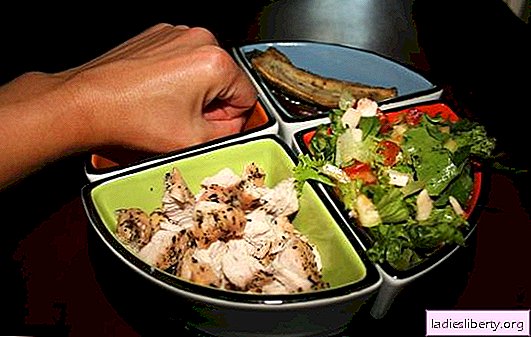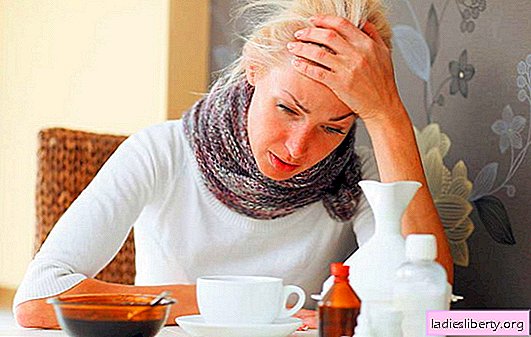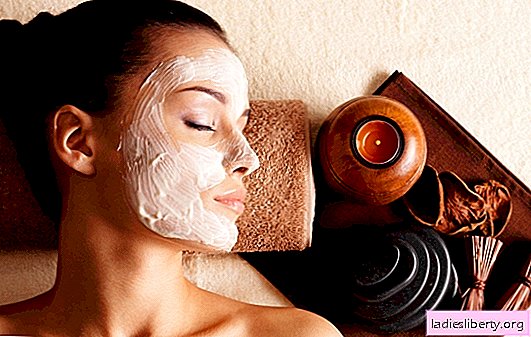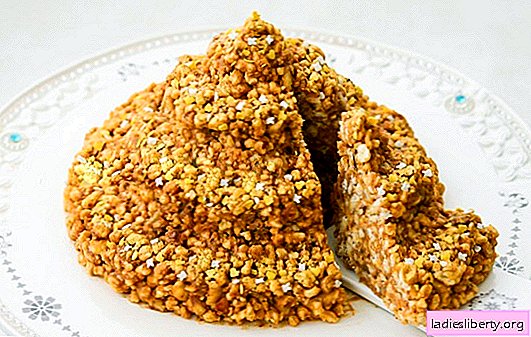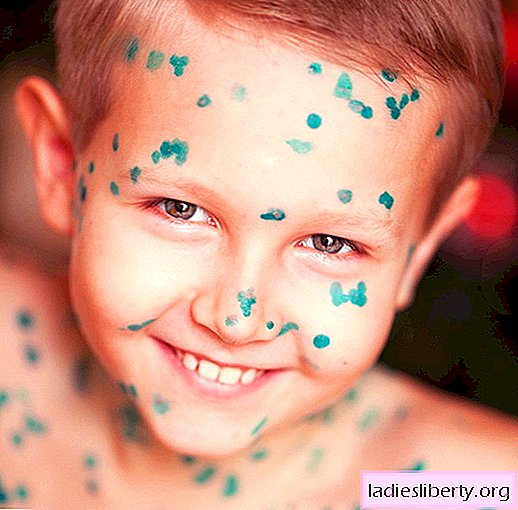
Few kids succeed in avoiding unpleasant itchy vesicles with which chicken pox generously endows children. Attitudes to this disease are twofold - some mothers are afraid of it, like fire, others are even glad that the child suffered it in childhood and earned a lasting immunity (see the photo below for chickenpox in children).
A dangerous virus with the beautiful name Varicella-Zoster (VVZ), discovered in 1958, affects a person at any age, only chickenpox in teenage and mature years is more severe.
What is chicken pox (chicken pox)
The name of the disease itself indicates that its pathogen flies freely in the air and lands where it wants. Chickenpox is a highly contagious disease caused by the herpes virus. Having taken a fancy to his master, he settles in his body for life. More than one and a half million people get chickenpox every year, 90% of whom are children under the age of twelve. Most often, the little restlesss “pick up” a viral infection in child care facilities — it is extremely difficult to avoid infection when at least one IHV carrier appears in the acute stage.
Chickenpox in children - how does the infection occur
The main source of infection is not the bubbles, as some people think, but drops of mucus from the nasopharynx of a sick child. That is why, even two days before the rash on the skin, an infected baby infects his friends around. During a conversation, during joint games and simply when in the same room, the virus from the patient first enters the air, and then settles on the mucous membrane of the nose, throat and mouth of others. With blood and lymph flow, it spreads quickly throughout the body and begins to multiply.
Within 1-3 weeks, the incubation period lasts as long as the causative agent of chickenpox does not bother the child and does not manifest itself. Given the "volatility" of the virus, which easily spreads to a distance of twenty meters, you can even become infected through the vents. The source of infection can be an adult, who has shingles. The causative agent of this disease and chickenpox is the same - the herpes virus Varicella-Zoster.
Chickenpox in children - stages of the disease and symptoms
Chickenpox in children proceeds in several stages, characterized by characteristic features:
1. Incubation period from 1 to 3 weeks - reproduction and accumulation of the virus occurs without external manifestations.
2. Prodromal period - in small children it may be absent or proceed with minor manifestations. This stage lasts for about a day or a little more and can manifest itself as an ordinary cold:
- temperature increase, often not too large;
- headache, weakness;
- loss of appetite, nausea;
- sore throat;
- Perhaps the short-term appearance of reddish spots on some parts of the body.
3. The period of rash - as a rule, is accompanied by a sharp rise in temperature to 39-39.5 degrees. Observations show that the higher the thermometer readings on the first day, the more abundant the rash and the more severe the course of the disease. Sometimes, in mild form, the illness occurs with a slight rise in temperature or without it at all, and the only sign of chickenpox is a rash.
What does chicken pox look like in children? (Photo)
In order not to be mistaken with the diagnosis, not to miss the first symptoms that appear, it is very important to know what the unpleasant disease looks like.
1. This is how the baby’s skin looks on the first day of the disease - pimples look like bites of annoying insects.
2. The specks are rapidly turning into bubbles filled with a clear liquid, bordered by reddish skin. Gradually, their contents become cloudy, and they themselves burst.
3. When the bubbles dry out, a crust forms, which under no circumstances can be peeled off.
4. At the same time, you can observe all the stages of manifestation of rash - specks, bubbles filled with contents, crusts (see photo of chickenpox in children below).




Features of rash in children with chickenpox
The first red spots resemble mosquito bites and appear on the body. However, the rash is rapidly gaining new positions, spreading its arms and legs, then goes to the face and scalp. The appearance of the skin rash is changing rapidly - red dots turn into bubbles filled with liquid, which after 8-10 hours burst and cause unbearable itching. After a while they dry up and become covered with a crust, but there are all new ones that go through the same cycle. On any part of the body, you can simultaneously see all the stages of the development of lesions, and each next causes a temperature jump. Bubbles, the number of which reaches several hundreds and even thousands, can affect the mucous membranes of the mouth, genital organs, eyes, and in severe cases cover even the soles and palms.
The period of rash lasts from 4 to 8 days, after which recovery begins. Yellow-brown crusts appearing on the spot of bubbles disappear in about a week, leaving no trace. But this is only if the mother helped survive the baby a period of severe itching - did not allow combing and getting into the wound infection. Premature tearing of the cortical layer can lead to the appearance of "small pox", which can last for a lifetime. Five days after the last bubble appears, the baby is considered non-infectious and can be taken for a walk.
Treatment of chickenpox in children
There is no specific treatment for varicella, and varicella does not respond to antibiotics and antibacterial drugs. Helping a child who has picked up an unpleasant virus consists in combating the symptoms of the ailment:
- if the thermometer quickly and surely rises above the 38 degree mark, the child should be given antipyretic - ibuprofen or paracetamol;
Caution! Aspirin and chickenpox are incompatible!
- do not force the child to eat by force, but to provide plenty of drink;
- carefully monitor the emergence of new bubbles and prevent them from scratching;
- You can use brilliant green, which slightly dries the rash and allows you to control the appearance of new bubbles. The same effect has an aqueous solution of potassium permanganate or 2-3% iodine tincture;
- If the child suffers from itching too much, ask the doctor to prescribe antiallergic medicines;
- for the period with symptoms of fever and intoxication, bed rest is desirable.
Treatment of chickenpox in children takes place at home, only if any complications occur, the doctor may suggest hospitalization. Parents should help the child cope with an unpleasant condition, alleviate the suffering from an itchy rash. Experts give useful recommendations, which are not difficult to implement:
- the apartment should be cool, with sweat itching intensifies;
- it’s imperative to bathe your baby with chickenpox - cool water will help him not to scratch himself, so bathing can be done several times during the day. It is very effective to add a little soda or a weak solution of potassium permanganate to the water - the first will ease the itching, and the second will dry the wounds. Be careful with wiping, it is better to slightly wet the skin with a soft towel;
- clothes should be from natural materials and not fit to the calf. Change it, like bed linen, you need daily;
- light gloves for the night will protect the damaged skin of a sick child from scratching. If an infection gets into the wound, an inflammatory process is possible and, as a result, the smallpox from the wound will remain for life. The same result expects from the violent tearing off of the formed crusts - they should fall off independently;
- if the doctor recommended antihistamine ointment - use it carefully, applying only directly on the bladder. This will help avoid a dangerous overdose.
On the sixth day after the appearance of the last bubble with the baby, you can go for a walk. He is no longer dangerous to others, but still very weak. It is better to postpone the return of the little martyr to kindergarten, giving him the opportunity to recuperate and grow stronger.
Ways to prevent chickenpox in children
Vaccination is a fairly reliable method of preventing chickenpox from the disease, but it is carried out at the request of the parents. After vaccination, the child receives protection for ten years - he either avoids infection altogether, or the disease proceeds in an extremely mild form. Many mommies believe that instead of vaccination, it is better to allow the baby to become infected at preschool age. In this case, they believe, the illness will pass in a mild form, and the beloved child will receive guaranteed protection for a lifetime.
However, the opinions of specialists in this matter are divided. Opponents of this method argue their position quite logically: there is a real danger of complications arising during the illness of babies, and the herpes virus that has settled in a child’s body can cause shingles in the future. So parents will have to make the right decision, after carefully weighing all the pros and cons.
Note to moms: Studies convincingly show that out of 100 vaccinated children, 90-95% do not get chickenpox and have very few chances to get sick with shingles in the future. The remaining 5-10% can go to bed, but in a very mild form. The duration of the vaccine - 10-20 years.
Attention! If the child came in contact with a chicken pox patient, the mother has 96 hours to make a decision on urgent vaccination. Later, vaccination will not help, and the baby is almost guaranteed to get sick.
In institutions, chickenpox quarantine is announced for 21 days.
What Dr. Komarovsky says about chicken pox in children
The most common question that worried parents ask their beloved doctor is the effect of brilliant green when children get chickenpox. Evgeny Komarovsky's answer is unequivocal - there is no curative effect from such an action, brilliant green serves only as an indicator of the period of contagion. Every day, smearing the bubbles with colored solution, one day Mommy notices that there are no new lesions. From this moment begins the countdown of the last five days, when the baby can be dangerous to others.
The doctor draws the attention of parents to the fact that the viral infection, which is chickenpox in children, is not susceptible to the effects of antibiotics and does not require special preparations for the normal course of the disease. Only in adolescence, when the disease is too hard, doctors prescribe antiherpetic drugs. The main tips that Dr. Komarovsky gives for mothers of sick children:
- avoid overheating, increasing itching;
- short cut the nails, if necessary, wear gloves, in every way to distract the baby from scratching bubbles;
- Do not give aspirin, so as not to cause complications of the liver;
- combing bubbles leads to bacterial infection and the likelihood of traces for life;
- chickenpox rather strongly suppresses immunity, so after suffering the disease, you should refrain from attending kindergarten and devote more time to walks.
Concerning vaccinations, Komarovsky believes, sensible parents should not have any discussions. However, he recalls that vaccination against chicken pox is voluntary, therefore, moms and dads will have to take responsibility for it.


